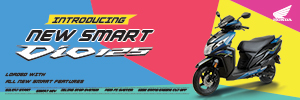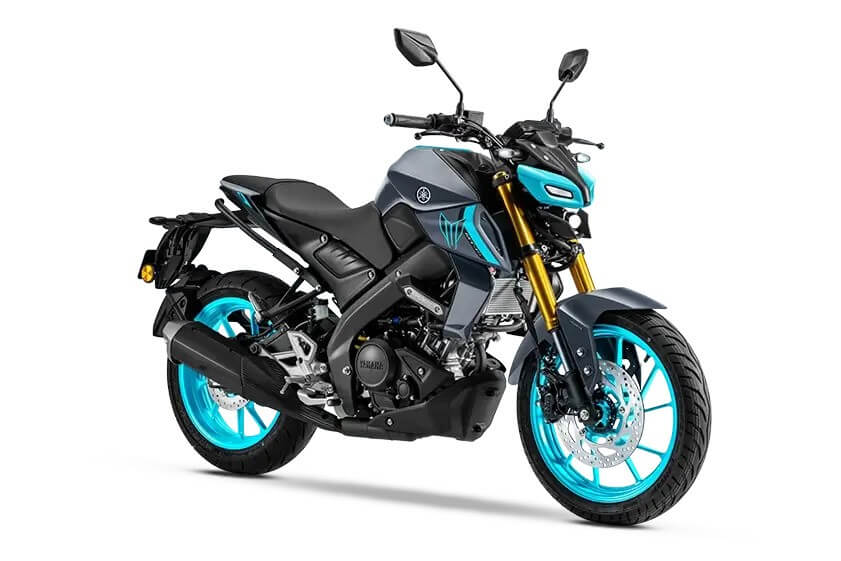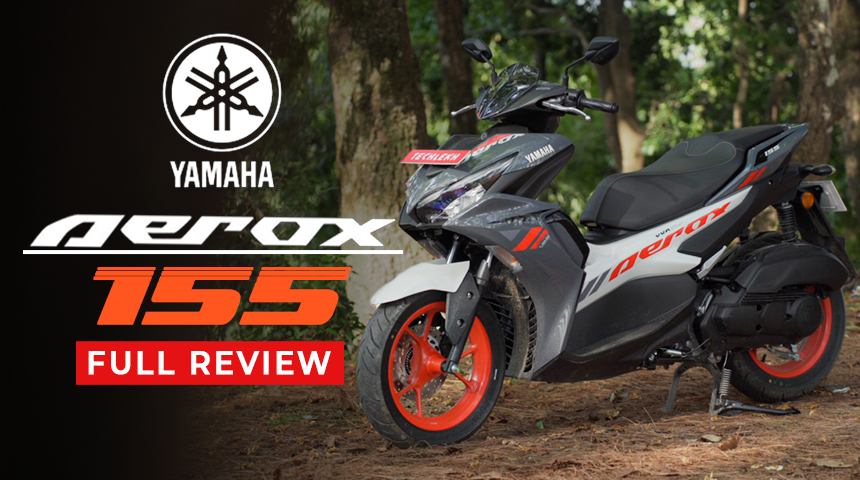Pros
- Iconic and Well-Known Styling
- Refined DTS-i Engine
- Premium Metallic Build Finish
- Super Practical in Nepali Roads
- Large Fuel Tank with Good Mileage
Cons
- Lack of Instant Pickup
- No Single-Channel ABS Option
- Outdated Analog Digital Meter
- Lack of BS6-compliant Variant
This is a detailed review of the legendary Bajaj Pulsar 150.
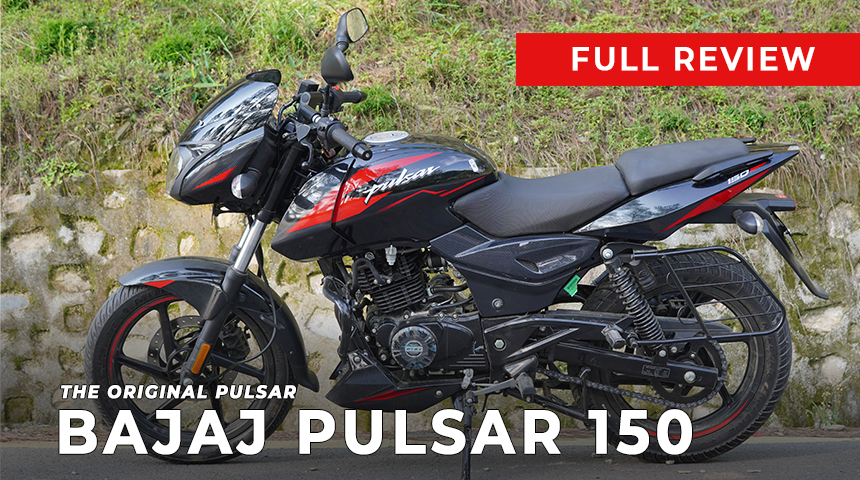
Bajaj Pulsar 150 began a revolution in the world of motorcycles.
Before the iconic Pulsar made its debut, the two-wheeler manufacturers mostly focused on featureless commuters.
It changed the way the market perceived motorcycles. Interestingly enough, it also kicked off the generations of more iconic Pulsars.
After two decades since its launch, the Bajaj Pulsar 150 is starting to show its age.
While it used to lead in the feature list, it has slowly begun to lose its pace against modern competition.
Despite this, the magic of the icon lives on.
It is available across two different variants, priced at Rs. 2.88 Lakhs for the Standard to Rs. 3.05 Lakhs for Twin Disc.
How can a motorcycle, introduced almost two decades ago, still be as popular? Is it because of its offering or its legacy?
In today’s review, we will explore that. We will find out just why the legend of the Bajaj Pulsar 150 lives on!
This is the complete review of the new Bajaj Pulsar 150 in Nepal.
Bajaj Pulsar 150 Specifications
- Engine Type: Single-Cylinder, 4 Stroke, 2-Valve, SOHC, DTS-I
- Emission Standard: BS4
- Displacement: 149.5 cc
- Cooling System: Air Cooled
- Starting Mechanism: Self Starter and Kick
- Max Power: 14 PS @ 8000 rpm
- Max Torque: 13.4 Nm @ 6000 rpm
- Gearbox: 5-Speed
- Top Speed: 110 Kmph
- Fuel Tank Capacity: 15 liter
- Mileage: 40-45 kmpl
- Front Tyre: Disc
- 90/90-17 in Twin Disc
- 80/100-17 in Standard
- Rear Tyre: Disc (Optional)
- 120/80-17 in Twin Disc
- 100/90-17 in Standard
- Tubeless Tyres: Yes
- Braking System: Standard
- Suspension Setup: Telescopic with Anti Friction Bush and Twin Nitrox Shock Absorber
- Seat Height: 785 mm
- Ground Clearance: 165 mm
- Kerb Weight: 144 kg
- Colors: Red, Black, Blue
Bajaj Pulsar 150 Price in Nepal: Rs. 2,88,900 – Rs. 3,05,900
Bajaj Pulsar 150 Review
Iconic Styling
Bajaj Pulsar 150 hasn’t received a major design upgrade in a long time.
Bajaj India has tweaked the visuals slightly after the introduction of the Twin Disc variant. It now comes with a split-seat setup, engine cowl, fatter front suspension, and fatter tyres.
These changes aren’t enough to create drastic visual differences.
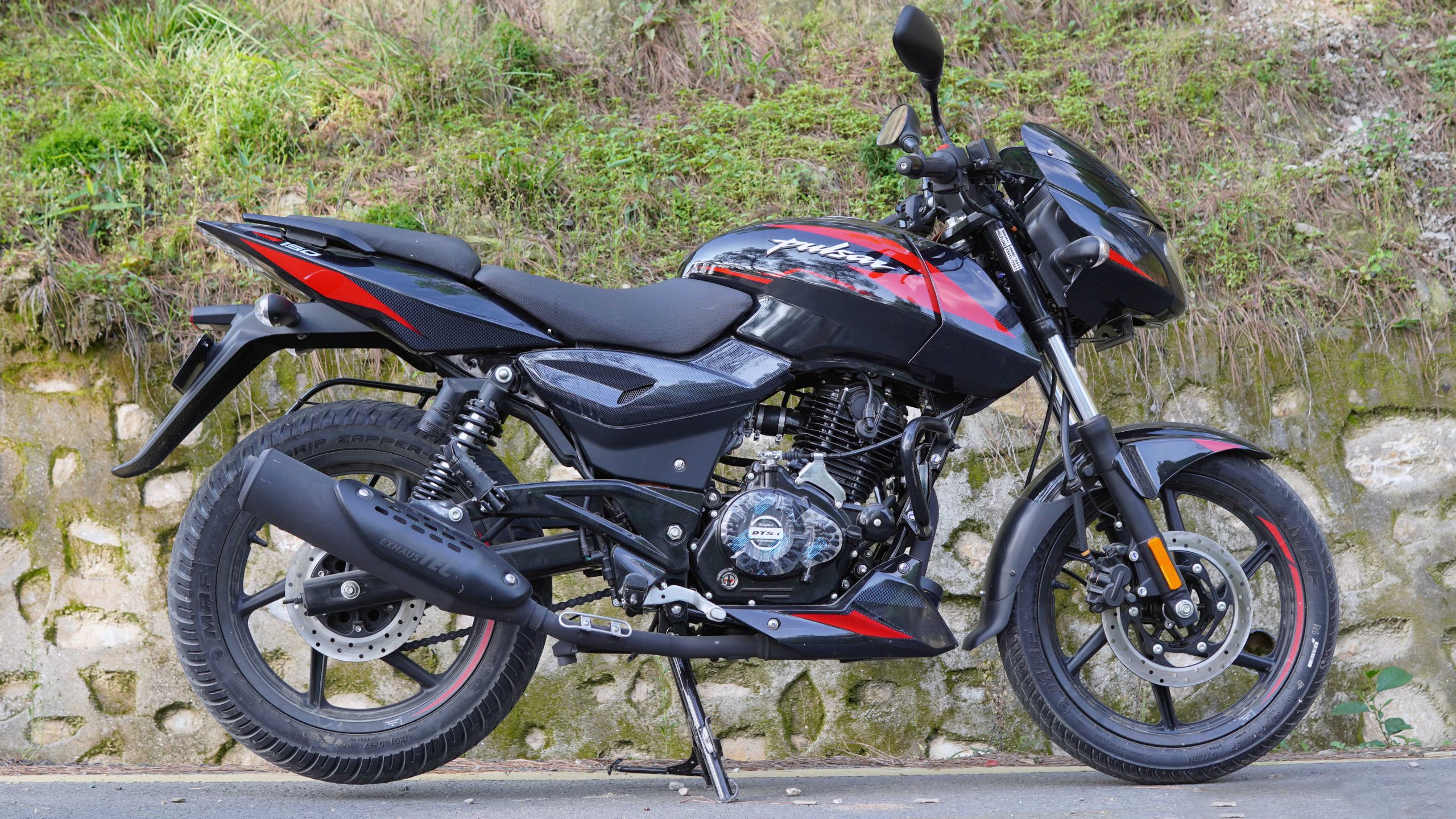
Nevertheless, it does further enhance the sportier appeal.
Like the 220F, the Pulsar 150 gets “Dagger” inspired graphics. The new fresh coat of paint brings out the sporty characteristics.
Furthermore, it is available in three colors: Red, Black, and Blue.
Classic Elements
Except for these, the rest of the elements remain unchanged.
The front section comes with the Wolf-Eyed Headlamp with a small visor. Both the headlamp and side indicators are halogens.
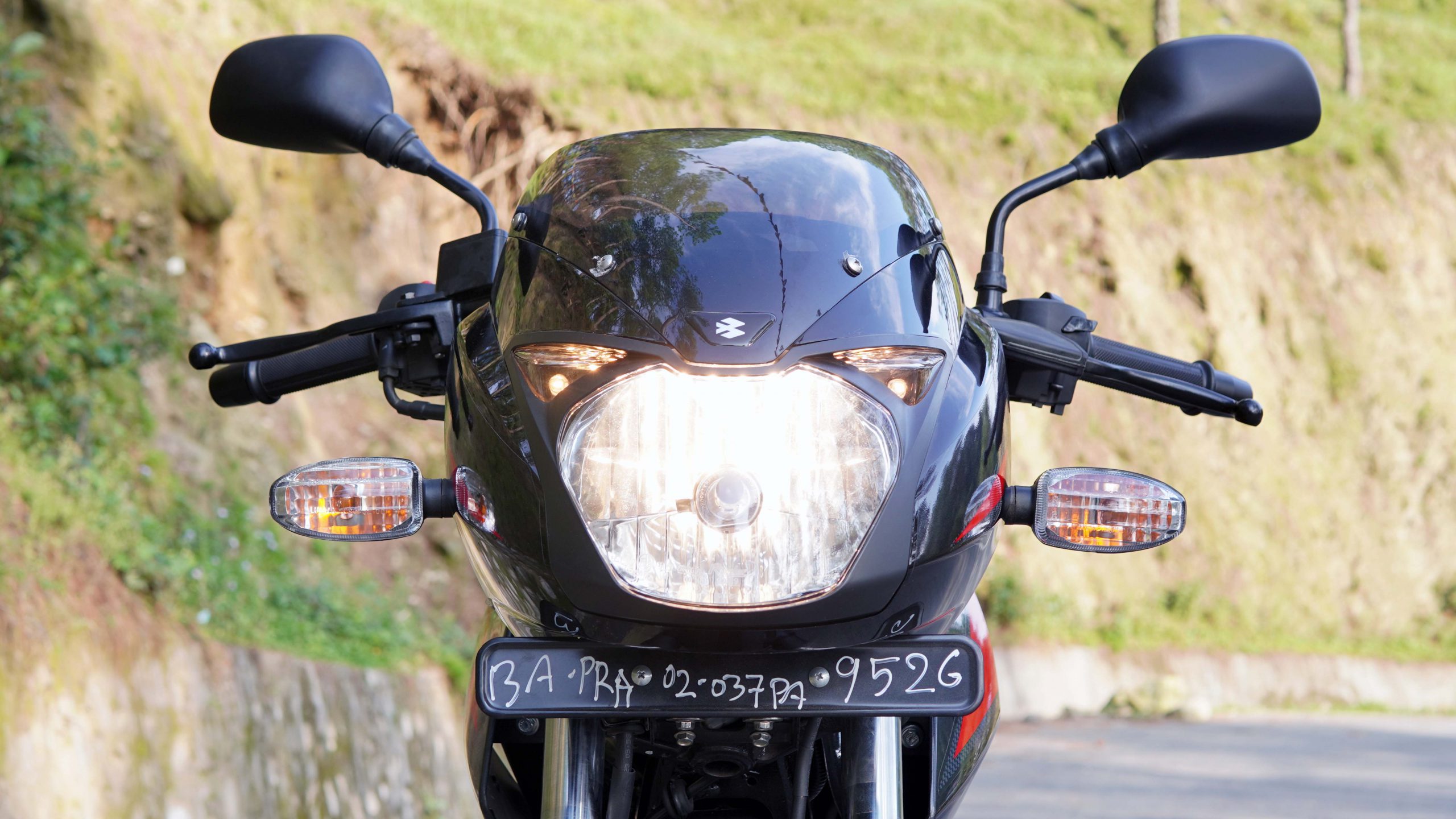
The design still feels fresh from the side profile.
It is a combination of sidelines and sculpted shrouds, creating a sort-of harmony. Honestly, it still looks better from the side.
The rear profile isn’t that interesting.
Nonetheless, it looks pretty good thanks to the iconic twin LED Tail Lamp.
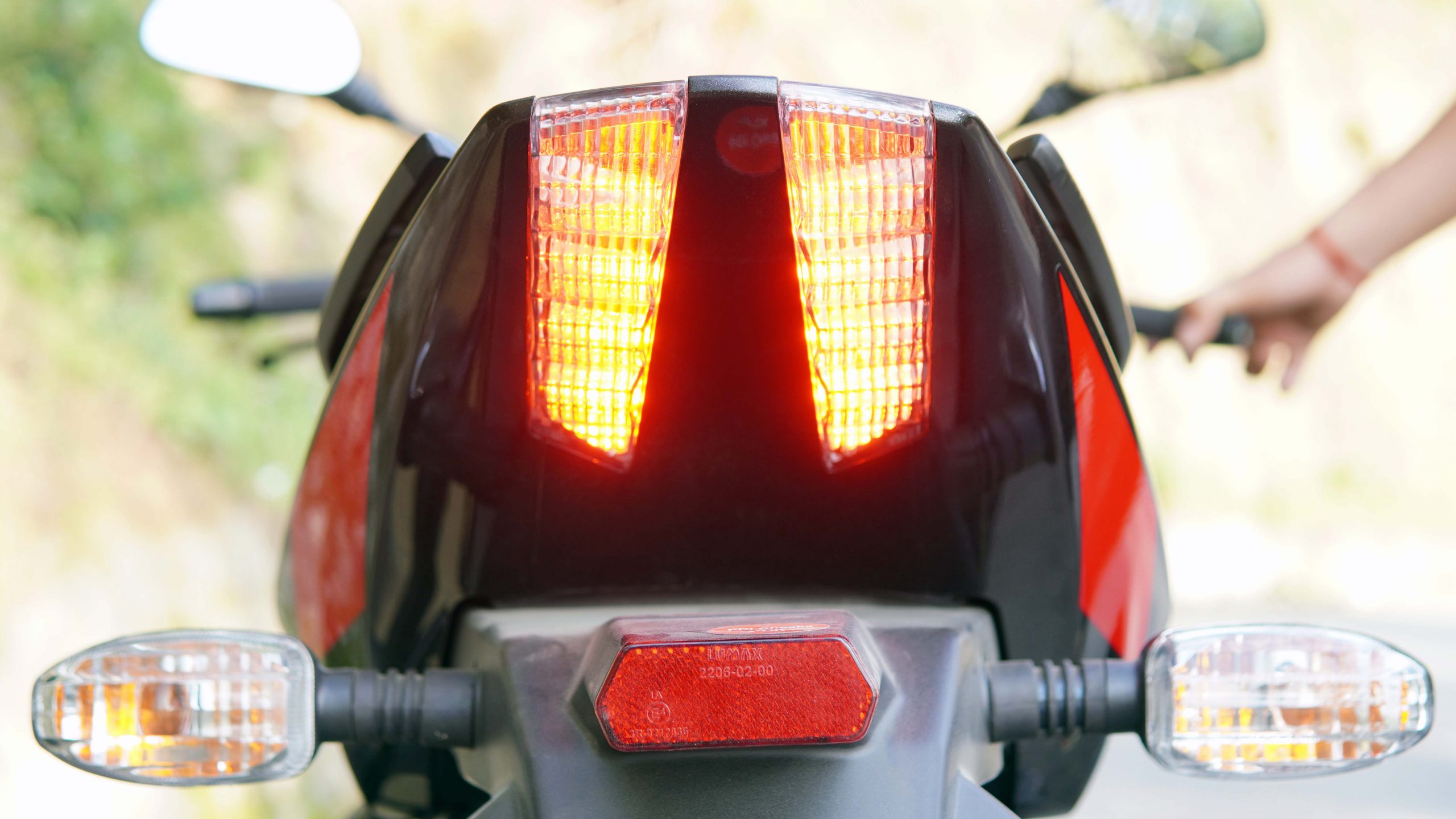
Other than that, it still comes with a metallic fuel tank.
This adds a premium feel in combination with the Clip-On handlebars and Back-lit Switches,
Performance
Bajaj Pulsar 150 is powered by a 149.5cc Twin Spark DTS-I Engine. It can generate a max power of 14 PS at 8000rpm and a max torque of 13.4Nm at 6000rpm.
Moreover, it is mated to a 5-speed gearbox with a 15-liter fuel tank.
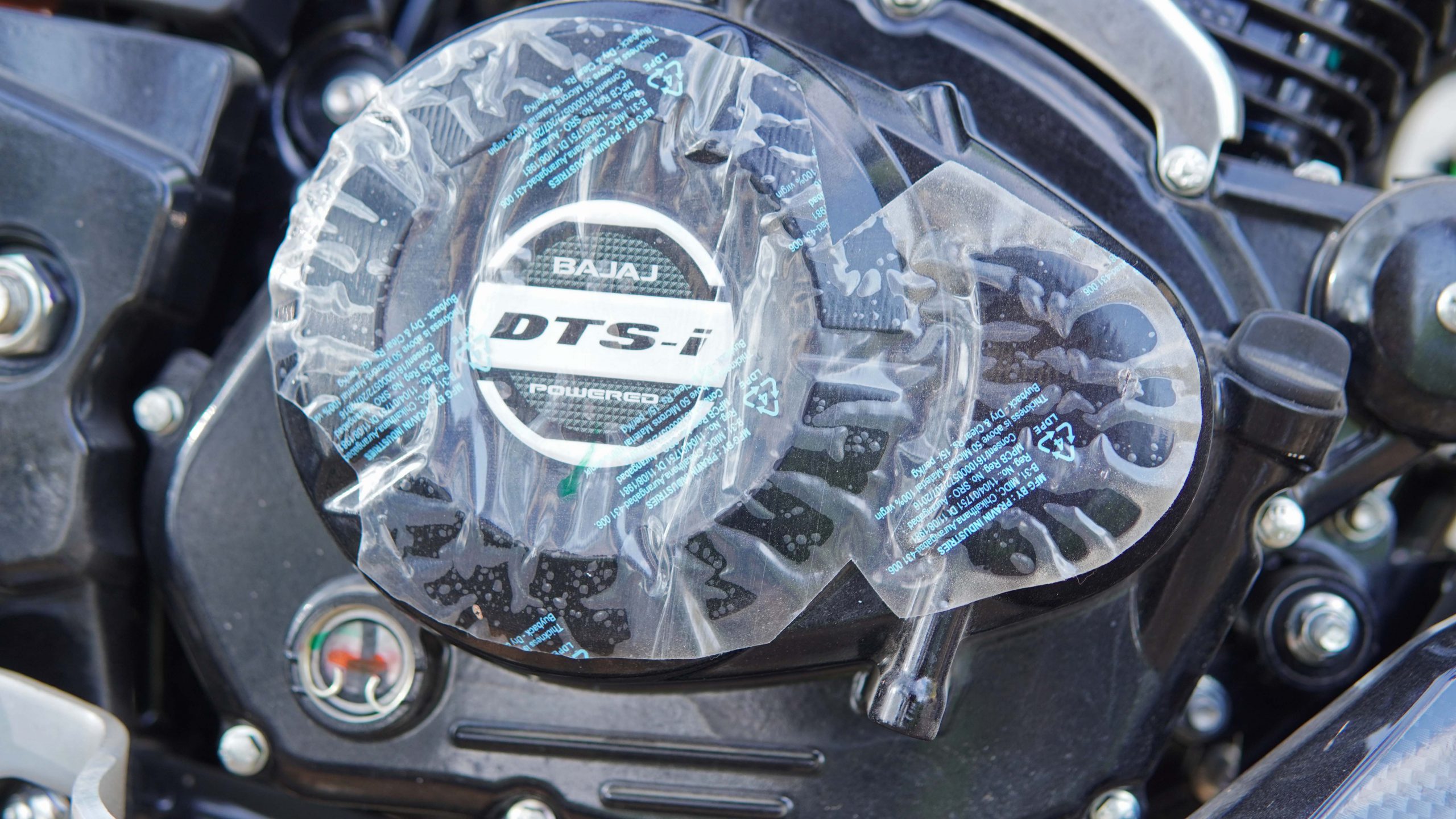
The Pulsar 150 engine has gotten minor upgrades over the years. Right now, the engine refinement is at its peak.
With that said, it is still a BS4-compliant Carburetor engine.
Despite being a carb engine, it misses out on a Kick Start. The issue was the same for the Pulsar 220F as well.
A Carburetor engines and cold mornings do not mix well. Fortunately, the kickstart is present in the Standard variant.
Familiar Features
Interestingly enough, the feature set continues to remain largely unchanged. Except for the minor stylistic tweaks, the overall features are the same.
It was once a segment leader in its class.
However, this has changed largely due to the lack of updates in recent times.
Nevertheless, these features are interesting and still hold their ground in the modern era.
Braking Performance
Bajaj Pulsar 150 comes in two different engine configurations: Front Disc Only and Dual Disc.
The Standard variant comes with a 260mm Disc at the front and a 130mm Drum at the rear. On the other hand, the Twin Disc variant comes with a 280mm Disc at the front and a 230mm Disc at the rear.
The one we tested was the Dual Disc one.
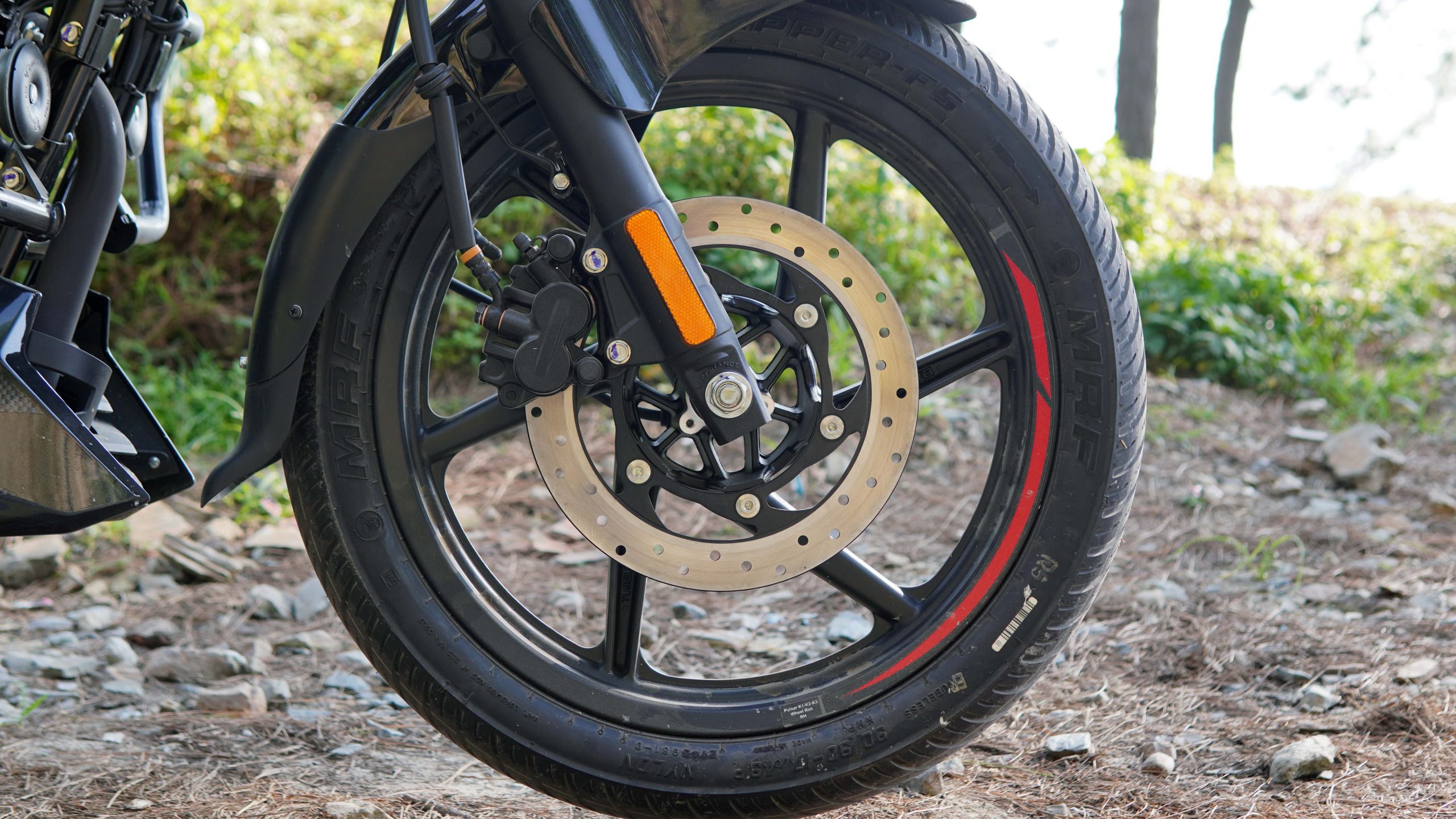
As expected, the Dual Disc performs pretty well. It provides ample confidence in most conditions.
However, I do think a Single-Channel ABS is a must.
The braking does not hold its confidence at higher speeds. It could have been improved with the introduction of the ABS.
Tyres
Furthermore, the tyre sizes will also depend on the specific variant.
Both variants feature 17-inch Tubeless Tyres.
The Standard variant comes with 80/100 at the front and 100/90 at the rear. Similarly, the Twin Disc variant comes with 90/90 at the front and 120/80 at the rear.
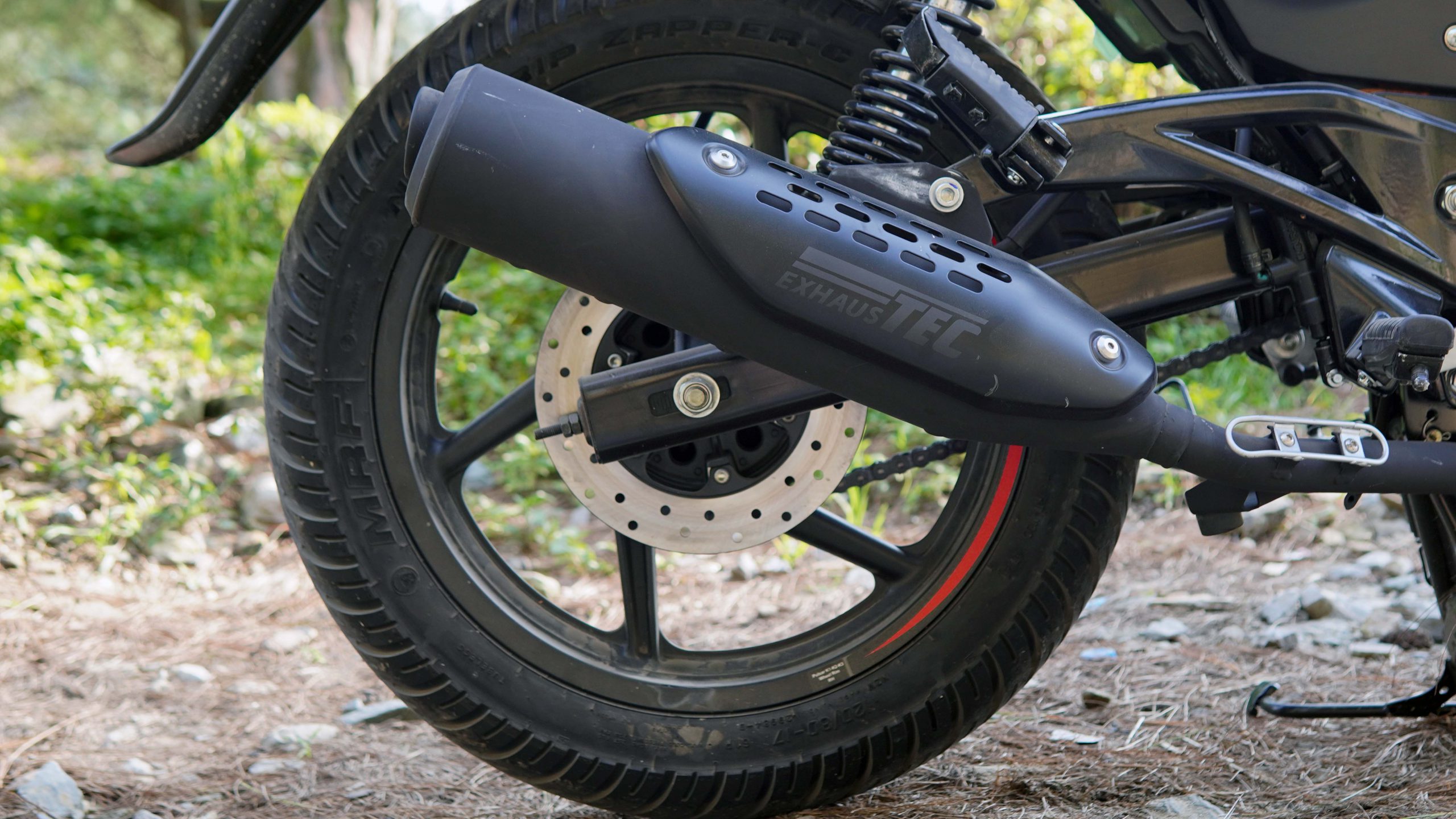
The larger tyre size on the Twin Disc variant has a bulkier appearance.
Fortunately enough, this also drastically improves the on-road experience. The traction is good, and rear tyre slippage is minimal on muddy roads.
Suspension
The suspension duties are handled by a front conventional Telescopic and a rear Twin Shock Absorber.
The twin disc variant comes with a bulkier 37mm front fork. On the contrary, the standard features a 31mm slimmer fork.
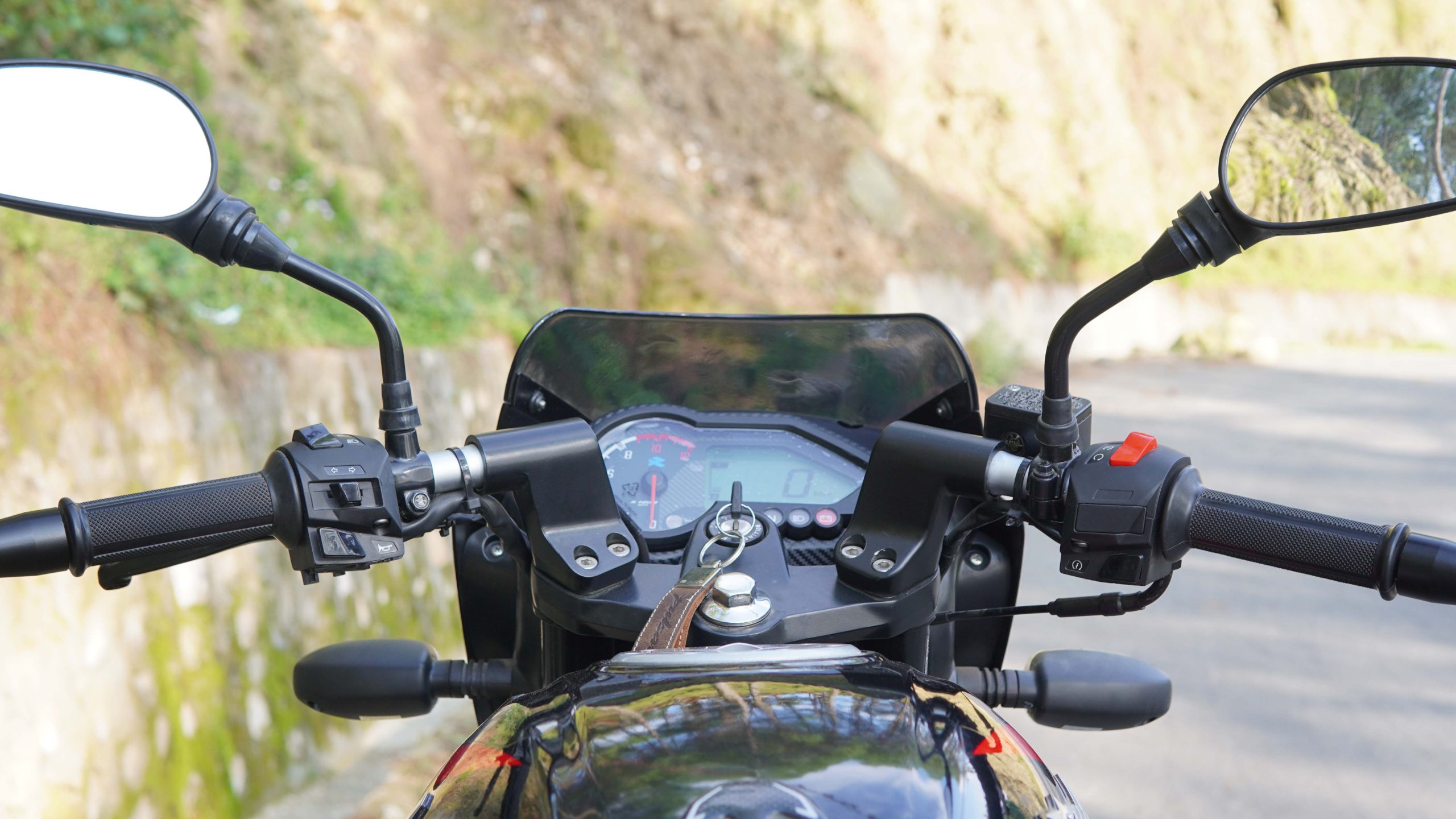
As for the suspension feel, it is comfortable.
While it does feel a bit jumpy in extreme off-road conditions, the overall experience is manageable.
Seat Comfort and Pillion
The suspension and the seat work hand-in-hand.
It provides a softer experience, allowing it to absorb even the harshest bumps. Moreover, the seat is long enough to easily accommodate both rider and passenger.
Plus, the performance does not take a hit despite a heavier load or larger pillion.
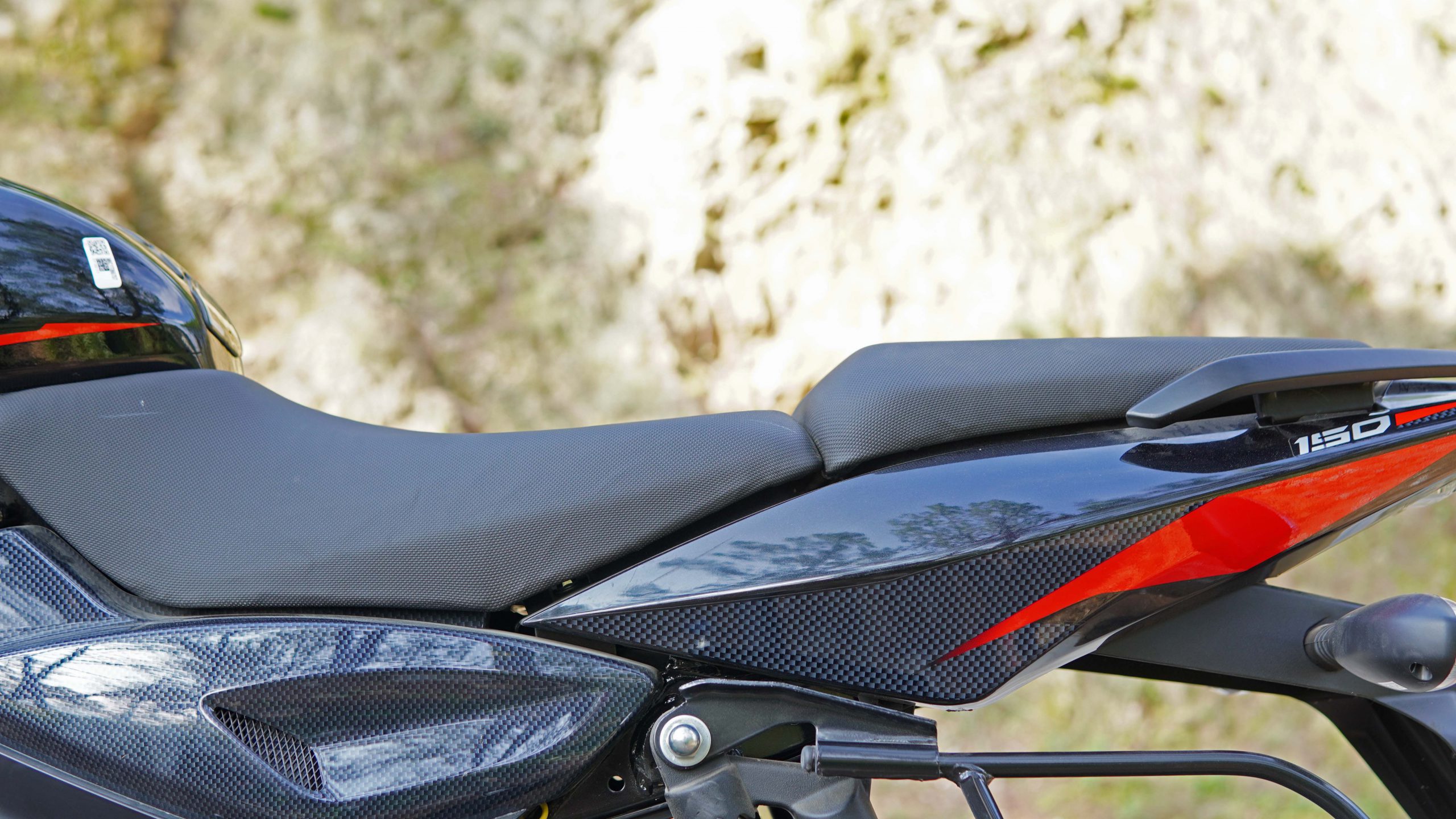
The riding position is a bit aggressive.
However, it still provides a comfortable riding position during long rides. But, the seat comfort does decrease marginally due to its softness.
Fuel Tank Capacity and Mileage
Bajaj Pulsar 150 comes with a massive 15-liter fuel tank capacity.
The 150-160cc segments have a 10 to the 12-liter fuel tank. Interestingly enough, the Pulsar 150 maxes out in this regard.
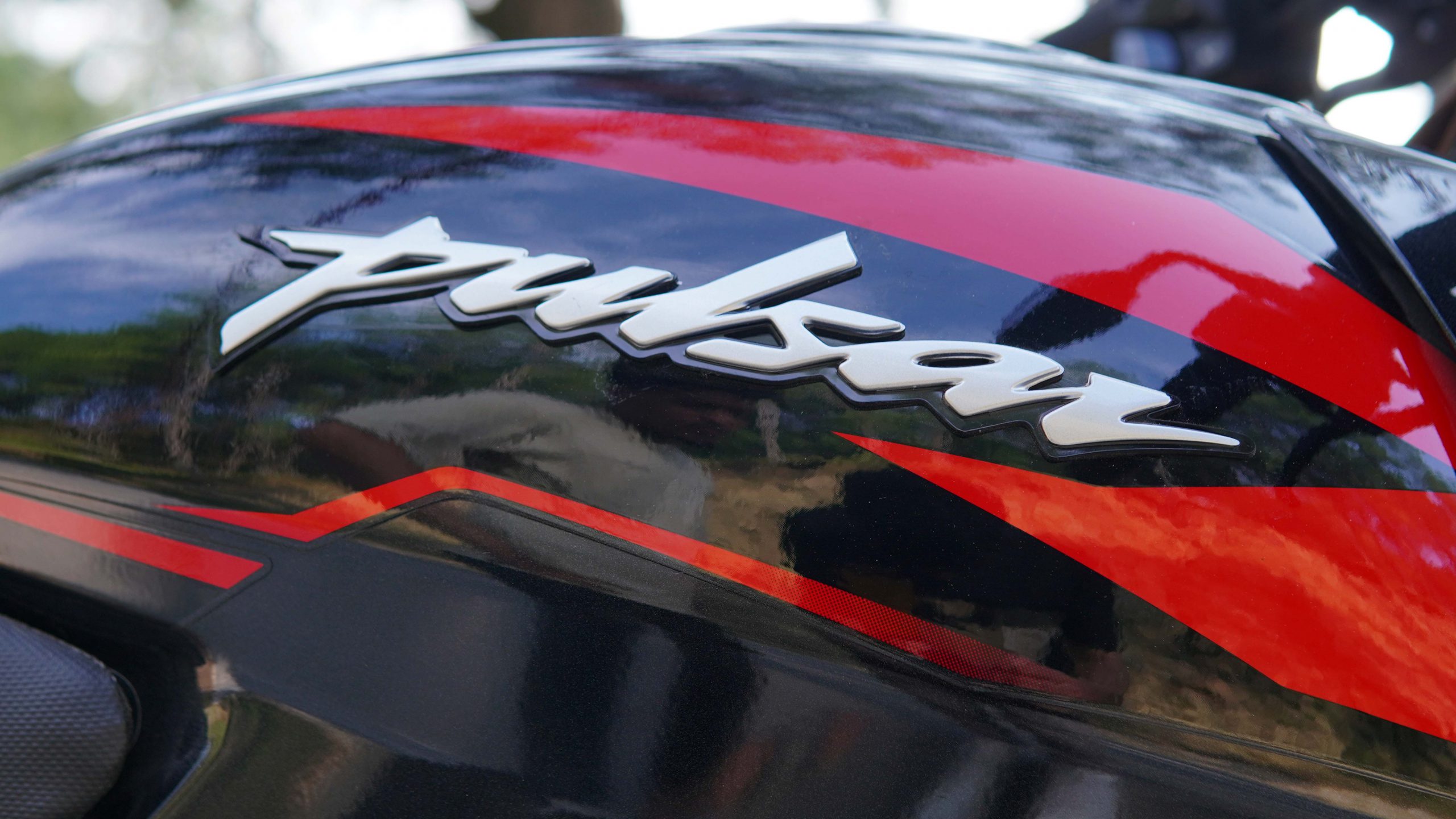
The average mileage is around 40-45kmpl. So, it should provide a 600Km-675Km range on a full tank.
Lack Luster Meter
Except for a few exceptions, the rest of the features are largely the same.
It still comes with the old Analog-Digital Instrument Cluster. While it is a classic, the instrument meter feels dated.
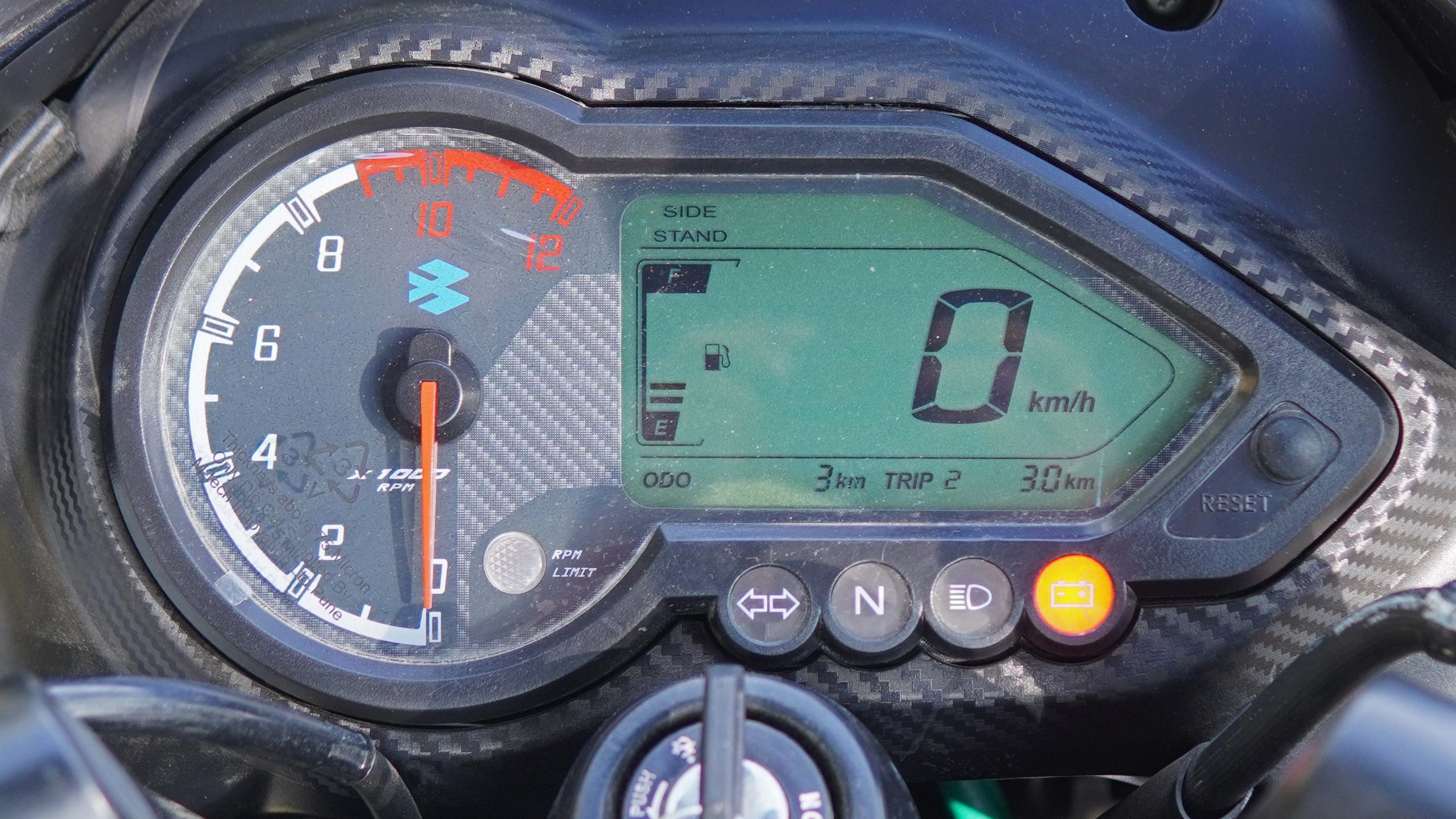
It is blue-colored for an additional premium experience. However, there is no interesting information on offer.
It only gets a Twin Trip Meter, Fuel Indicator, Odometer, RPM Meter, and Side Stand Indicator.
An additional clock would have largely improved its practicality. Nevertheless, Bajaj has fixed this in the BS6 iteration.
Bajaj Pulsar 150 Feature Highlights
- Twin-Spark DTS-I Engine
- Sporty Styling with Sharp Fuel Extension
- Analog-Digital Instrument Cluster
- Iconic Design
- Wolf-Eyed DC Headlamp
- LED Tail-Lamps
- Engine Cowl
- Clip-On Handlebar
- Back-lit Switches
- Split-Seat and Sporty Grab Rails (Optional)
- Dual Disc Braking (Optional)
My Experience with Bajaj Pulsar 150
All-Rounder Engine
Bajaj Pulsar 150 has retained its popularity despite the lack of new and interesting features.
This is because Bajaj has perfected where it counts the most.
The feature list can only take a motorcycle so far. People don’t ride the features, they ride motorcycles.
Thanks to its all-rounder engine, the performance is super refined.
The DTS-I engine shines through in the low-end and mid-range performance. Moreover, the punch can be felt around the 4000-6000rpm range.
Above the 6000 rpm range, the engine refinement continues to degrade as more vibrations creep in through the footrest and the handlebar.
Riding it below 4000 rpm feels smooth, but it lacks the initial punch expected from a Pulsar.
For this reason alone, the 4000-6000rpm brings out the sweet combination of power, torque, and refinement.
Staying on the range, the rider can easily take on any terrain with relative ease. Furthermore, the engine does not even struggle in the harshest conditions.
On the contrary, it outshines even its true 150cc rivals.
Since the top-end performance isn’t all that interesting. Pulsar 150 does struggle on the highway.
The dance between the power and torque is unmatched at the high RPM.
However, the Pulsar 150 brings out its complicated dance moves in the low and mid-range. And, it is enough to tackle any sort of situation in the city or the traffic.
Real World Handling
Interestingly, real-world handling is a mixed bag.
The heavier weight assists in high-speed stability. However, it does hamper the riding style for those used to riding lighter motorcycles.
Furthermore, the cornering isn’t all that bad.
While the cornering does take some getting used to, it isn’t as accurate as in the NS200.
The pickup performance is yet another point to consider.
As in, the pickup isn’t instantaneous. Rather, it takes time to build on that.
Hence, it does take some getting used to, especially mapping out the torque timing during overtakes.
Other than that, the throttle pull is rider friendly. And, the light clutch feel provides great feedback to the riders.
Despite the few hiccups, the Bajaj Pulsar 150 is still enjoyable to ride in the real world.
It is one of the most popular motorcycles in the segment. And, it is due to its handling, rides quality, and ride feel.
Battle with Competition
Bajaj Pulsar 150 rivals Honda Unicorn 150, Yamaha FZS v2, and TVS Apache RTR 160 2V.
Except for the Apache RTR 160 2V, the Japanese rivals have garnered expensive price tags. Furthermore, the spare parts and maintenance costs also fall on the expensive side.
Hence, the TVS Apache RTR 160 2V comes across as a true competitor.
While the TVS does maintain a more robust performance and feature set, it simply fails to hold its value on the secondary market. In contrast, the Bajaj Pulsar 150 is still a stronger option with a perfect balance between affordability, maintenance, and resell value.
Shortcomings
Bajaj Pulsar 150 is a good motorcycle, but it isn’t great.
It still misses out on modern features like Fuel Injection, ABS, LED Headlamps, and more.
Fortunately, the BS6 iteration does get a FI engine and ABS. However, it still misses out on other modern features.
Then again, people don’t buy the Pulsar 150 for its features. They go for it because it is a Pulsar.
Conclusion
Right now, the Pulsar 150 BS4 is at its best.
It still has a good balance between price, features, and legacy. Furthermore, it is available across two different variants for additional affordability.
Perhaps, that’s why the Bajaj Pulsar 150 continues to be a great offering.
This is why it continues to be a best-selling 150cc motorcycle, even after two decades since its first inception.
Also, watch our Bajaj Pulsar 150 Review Video!
-
Realme C63 with 50MP Camera Now Available in NepalHIGHLIGHTS The Realme C63 price in Nepal is Rs. 15,999 (4/128GB). It is powered by…
-
Yamaha MT-15 Version 2.0 Expected to Launch Soon in Nepal: Find Out What’s NewHIGHLIGHTS Yamaha MT 15 V2 price in Nepal is expected to be around Rs. 6…
-
Yamaha Aerox Review: Fast and Fun with R15 at Heart!TechLekh Verdict Yamaha Aerox 155 is an outstanding scooter that combines power, style, and advanced…



